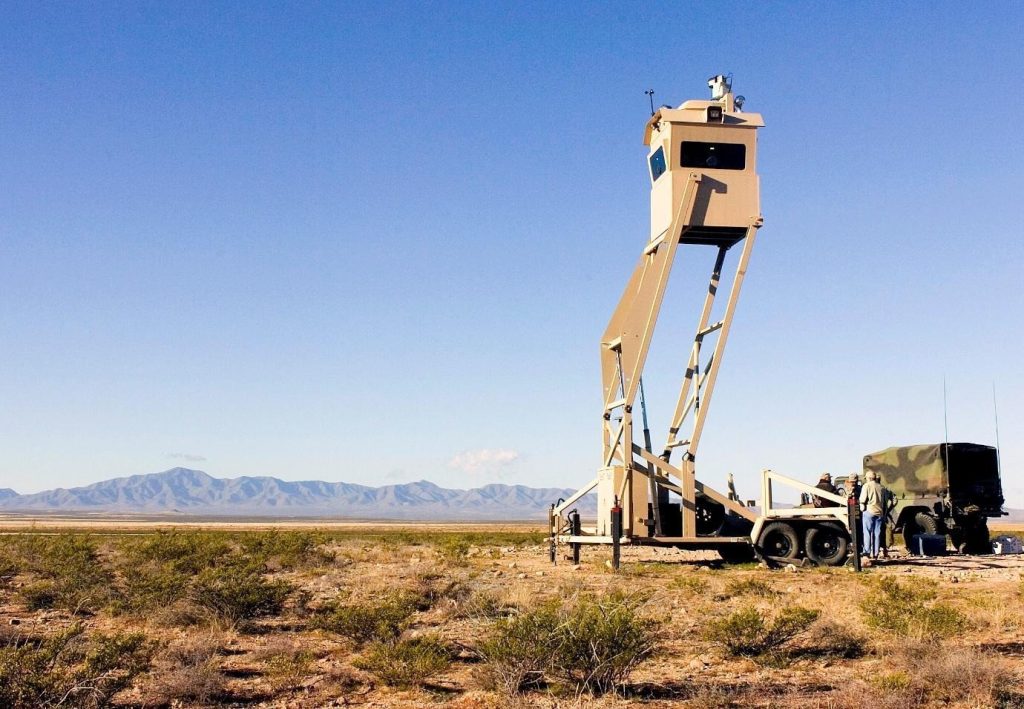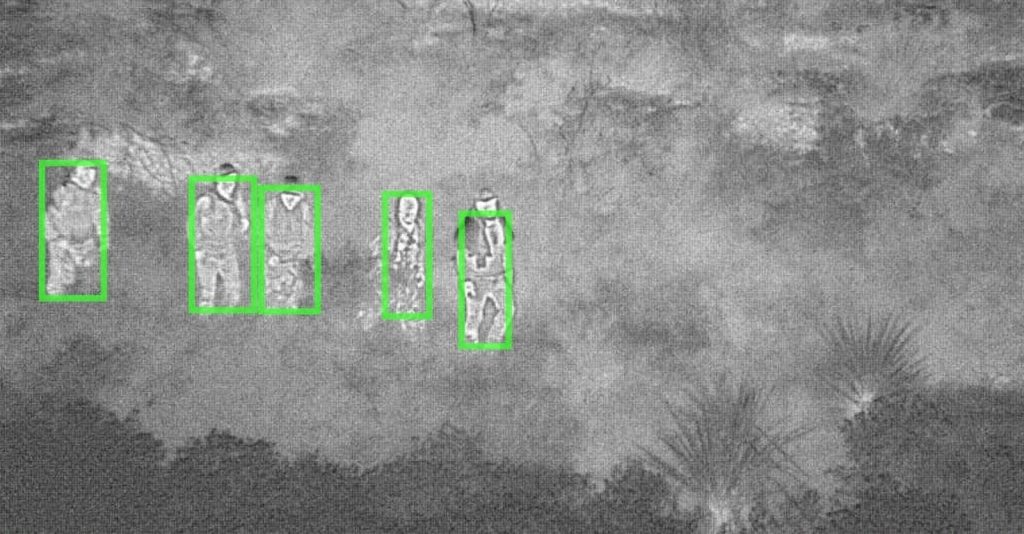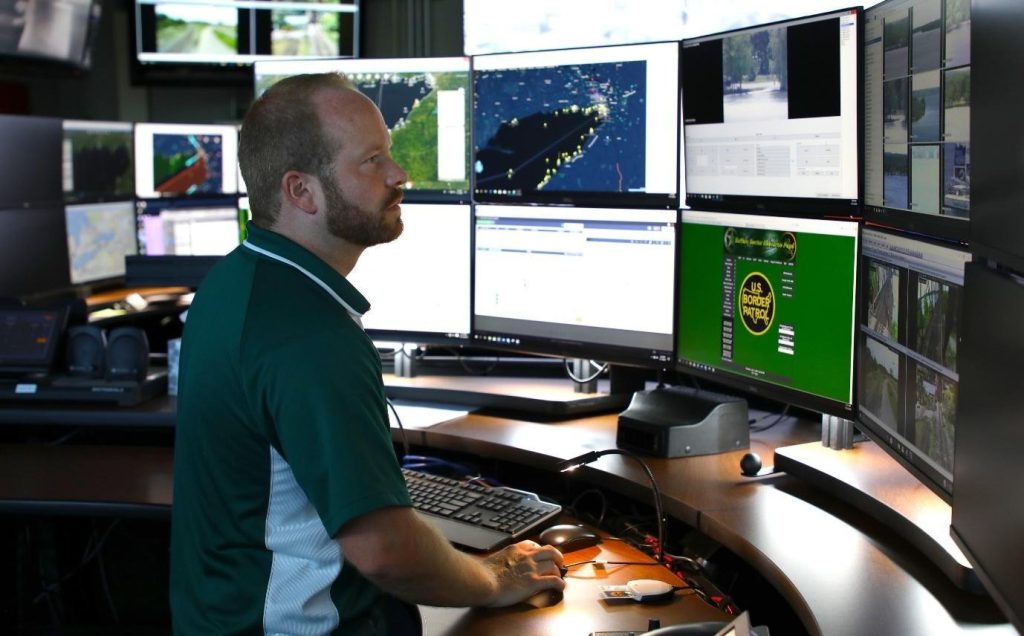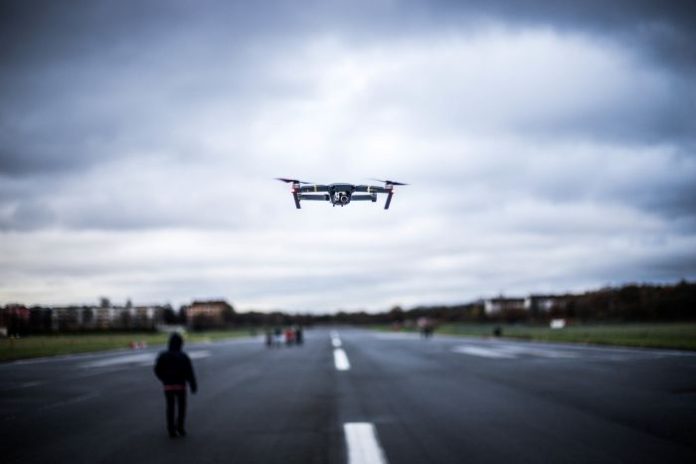The border is no longer a line on a map. It has become a complex battlespace shaped by autonomous threats—from low-cost drones to robotic incursions and AI-directed swarms of drones. For defense forces and homeland security officials, the challenge is not just stopping individuals but building an adaptable system of surveillance technology, infrastructure, and intelligence capable of detecting and tracking drone threats in real time. Clear Align, an American sensor innovation company, has been addressing these threats with Advanced Drone Detection. Camera towers and camera-based systems with radar have historically been central to border security programs, serving as key components of border surveillance efforts despite facing operational challenges.
At the heart of this shift is the pairing of EO/IR imaging with artificial intelligence. Radar can miss a quadcopter or drone made with radar-absorbent materials, but its heat signature at night remains visible to thermal cameras or infrared sensors; so operations need both. The critical role of images—whether day cameras, radar, or infrared cameras —is evident in threat detection, situational awareness, and intelligence gathering.
Table of contents
- Data Intelligence from AI to Identify
- Introduction to Border Patrol
- Intelligence from Multi-Layered Border Surveillance Systems
- Partnerships and Data Integration at Command Centers
- Homeland Security and Situational Awareness
- The Role of a Border Patrol Unit
- Infrastructure as a Strategic Challenge
- The Strategic Imperative
Data Intelligence from AI to Identify
With AI-powered analytics, operators can now detect, classify, and track incursions across land, air, and sea—strengthening both border protection and national security. Surveillance towers and night vision technologies are also used to gather evidence for law enforcement and border security operations.
Introduction to Border Patrol
The U.S. Border Patrol stands as a frontline force within the Department of Homeland Security, tasked with the critical mission of securing the nation’s borders and preventing unauthorized entry. To meet the evolving landscape of border threats, Border Patrol agents rely on a sophisticated suite of border technology and surveillance technology, including autonomous surveillance towers, advanced night vision equipment, and integrated detection systems. These tools are essential for maintaining border protection and upholding national security, especially along the challenging terrain of the southern border.

Oversight from the Government Accountability Office and the DHS Inspector General ensures that investments in technology and equipment are both effective and aligned with strategic security objectives. Their evaluations help identify gaps and drive improvements in the deployment and maintenance of surveillance systems, reinforcing the importance of accountability in border operations.

Operating in environments where low light and complete darkness are common, Border Patrol agents depend on real-time data and situational awareness to detect, identify, and track potential threats. The ability to respond quickly and effectively is paramount, as agents must adapt to rapidly changing conditions and emerging risks. The integration of advanced towers, sensors, and surveillance equipment not only enhances the effectiveness of individual agents but also strengthens the overall security of the border, making it more resilient against incursions and autonomous threats.
Intelligence from Multi-Layered Border Surveillance Systems
Modern surveillance systems are built as layered defenses, designed to maximize situational awareness across domains:
- Persistent EO/IR coverage from towers, aerostats, and autonomous surveillance towers monitoring the land domain for ISR and operational planning, supporting ISR and border security operations.
- Counter-UAS integration for early detection and rapid neutralization of hostile drones.
- Maritime surveillance extending protection to ports and littoral zones.
- Mobile equipment and systems that can deploy quickly to shifting hotspots.
This architecture reflects the growing importance of resilience in border technology. By combining fixed towers with mobile assets and integrating data across agencies, security forces build a network that is far harder to penetrate than any single barrier. Past attempts to fix issues with surveillance systems like ISIS and ASI have aimed to improve the mission, but some fixes have not fully resolved core problems.

Partnerships and Data Integration at Command Centers
Securing the border requires more than technology. It depends on cooperation among government agencies, law enforcement, and industry. Partnerships ensure that advanced surveillance technology—from high-resolution cameras to distributed sensors—is deployed effectively, while data exploitation turns raw feeds into actionable intelligence.
The Government Accountability Office has emphasized that maintenance and consistent evaluation are as important as new investments. Without reliable infrastructure, advanced towers and systems risk becoming stranded assets. Reliable service is critical, as system outages can severely impact operational reliability and accountability.
The DHS Inspector General has issued similar reports, warning that inconsistent upkeep undermines effectiveness at the southern border. Ongoing efforts aim to solve operational and technological challenges in border security by implementing new strategies and initiatives.
Homeland Security and Situational Awareness
Homeland security is a shared responsibility that demands constant vigilance and the seamless integration of technology, intelligence, and human expertise. Achieving true situational awareness is at the heart of this mission, enabling government agencies to detect and respond to threats in real time. The Border Patrol, in partnership with CBP and other agencies, leverages a comprehensive array of surveillance technology—including high-resolution cameras, advanced sensors, and drones—to monitor and secure the border.
Artificial intelligence and sophisticated data analysis methods empower teams to identify suspicious activity, track movements, and anticipate potential incursions before they reach vulnerable communities. Night vision equipment, such as the Aurora PRO, plays a vital role in low-light and nighttime operations, giving agents the ability to detect threats that would otherwise remain hidden. This technology extends the reach and effectiveness of border protection efforts, ensuring that agents can operate effectively regardless of lighting conditions.
Collaboration between government agencies, industry partners, and local communities is essential for maintaining secure borders and protecting national security. Effective communication and coordination allow for rapid information sharing and a unified response to emerging threats. The Border Patrol team’s commitment to innovation, adaptability, and teamwork ensures that the U.S. remains prepared to address the challenges of modern border security, safeguarding both the nation and the communities that depend on its protection.
The Role of a Border Patrol Unit
Border patrol agents remain the backbone of enforcement. Equipped with night vision optics designed for professionals such as law enforcement and security personnel, motion sensors, and surveillance cameras, agents operate in low light and even complete darkness to intercept incursions. Night vision and surveillance equipment are also essential in search and rescue operations along the border. Modern equipment such as autonomous surveillance towers expands their reach, allowing smaller teams to monitor larger areas.
Collaboration with CBP and other government agencies ensures that intelligence is shared and that operations remain coordinated. This networked approach increases the ability of agents to identify and respond to threats before they reach communities near the border.
Infrastructure as a Strategic Challenge
Physical infrastructure—roads, communications, and power—remains a critical enabler of border protection. The Department of Homeland Security (DHS) has invested in advanced border technology, yet funding shortfalls and delayed upgrades have limited impact. Large amounts of money continue to be allocated to border technology programs, drawing scrutiny over their effectiveness and the return on investment. Many new autonomous towers are not qualified well and are a closed package. Technology needs to evolve in the market and service the mission.
Reports show that without reliable maintenance of towers, equipment, and systems, overall effectiveness declines. The House of Representatives plays a key role in budget allocations and oversight hearings related to border security infrastructure.
For border operations, keeping assets online is as important as deploying them. Maintenance, standardized processes, and sufficient resources are essential to ensure that the billions invested in technology translate into real security.
The Strategic Imperative

The border has become a testing ground for the future of national security. Adversaries are adapting quickly, exploiting gaps with commercial drones and AI-driven incursions. In response, governments must prioritize surveillance technology, invest in resilient infrastructure, and empower border patrol with the equipment and intelligence they need to succeed.
The path forward requires a balance: innovation in technology, sustained attention to maintenance, and coordination across all levels of government. In an age of autonomous threats, the ability to achieve real-time situational awareness will determine whether borders remain secure.
The challenge is formidable, but the lesson is clear. Border surveillance is no longer about static defenses—it is about building adaptable systems that fuse intelligence, technology, and human judgment. Those who master this integration will not only secure their borders but also set the standard for how security is defined in the twenty-first century.










